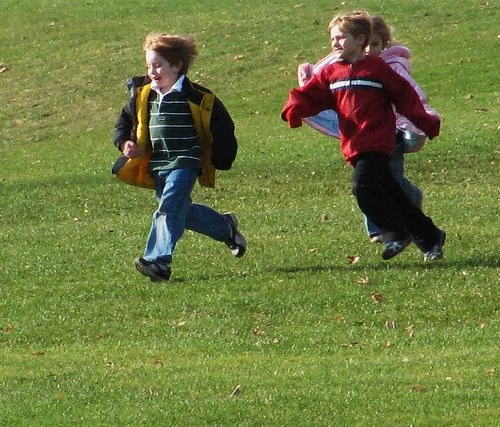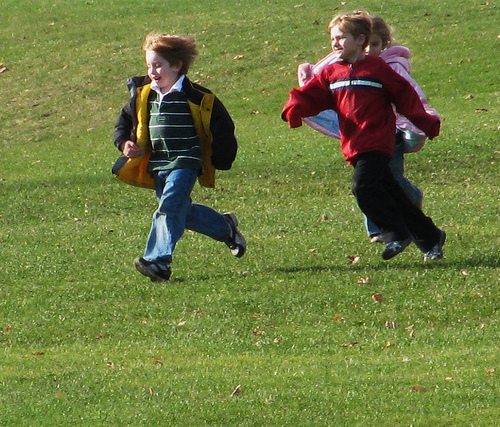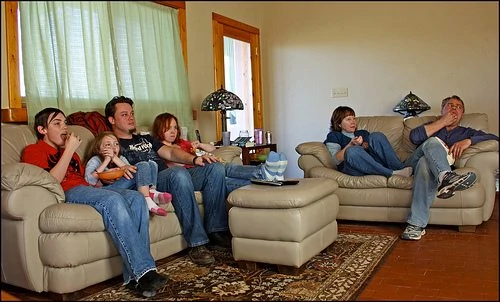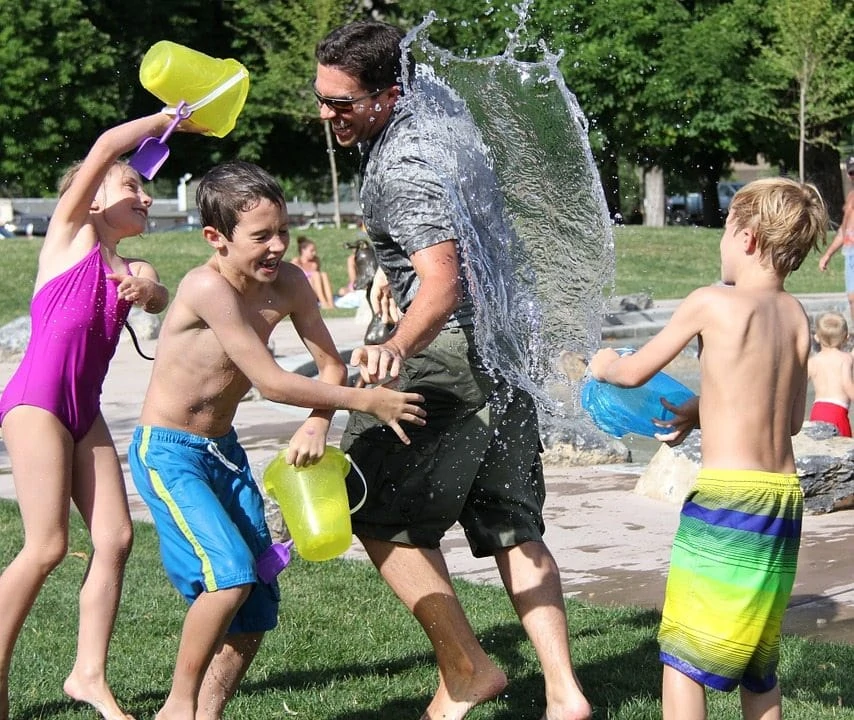Last month, we looked at how the distraction brought on by electronic media and multitasking can cause problems for kids – things like lower grades, mood swings and more behavioral issues. But it’s not just about mental distraction. There’s a physical aspect as well. For kids who are glued to a screen are kids who are not being physically active. The glut of electronic media and gadgets encourages sedentary behavior. In fact, the more screen time a child has, the more likely it is that he or she will become obese. Some estimates suggest that the incidence of obesity rises 6% for every hour a child spends in front of a screen.
Of course, screen time isn’t the only factor in determining obesity, but considering how childhood obesity rates have skyrocketed through the period in which computers and gadgetry have become ubiquitous, we may assume that, in addition to dietary changes, it’s a major factor. According to NHANES data reported on the CDC website, from 1976 to 1980, the obesity rate for children was between 5% and 6.5%. Today, the rates are over 12% for the youngest cohort (ages 2 through 5) and over 17% for remaining groups up to the age of 19, and even higher for Latinos and African-Americans. Type 2 diabetes, once so rarely seen in children that it was called “adult onset diabetes,” is being diagnosed at ever increasing rates in children, and it’s now predicted that today’s younger generations will be the first to not live as long as their parents.
First Lady Michelle Obama rolled out the program she’s spearheading to try to get our nation’s kids fit and healthy once again: Let’s Move!
Meeza 1/Flickr
Let’s Move aims “to solve the epidemic of childhood obesity within a generation” by encouraging physical activity; improving access to healthy, affordable food, including in the schools; and supporting parents in making healthy family choices. It will be interesting to see the results of this program, not just its effect on obesity rates and physical fitness, but also how it may impact kids’ academic achievement.
For it’s well known that exercise, movement and play boost brain power and mood, and also support the development of positive social and emotional skills. Among some of the more telling findings, which we discuss in our book Yoga Calm for Children:
- Many studies have shown that the greatest yield of nerve growth factors happens when the body engages in complex movement patterns (Ratey, 2003).
- Movement and play develop the sensory-motor intelligence that supports intellectual, social, and personal development (Ayres, 2005).
- Higher levels of fitness are associated with higher academic achievement (California DOE, 2002).
- Exercise is really for the brain…It affects mood, vitality, alertness, and feelings of well-being (Ratey, 2001).
More of the strong ties between physical activity, good nutrition and academic preparedness and achievement are spelled out in this excellent handout (PDF) from the Minneapolis Public Schools on “The Relationship Between Student Health and Learning.”
What’s more, there’s some evidence that obesity itself may be a drag on academic achievement. For instance, a recent study by Jimmy Byrd, “The Impact of Physical Activity and Obesity on Academic Achievement,” showed that
students that maintained a higher level of physical activity maintained higher grades and learned at a faster rate than those students who were less physically active. Conversely, a negative relationship was observed between obesity, as rated by the BMI, and academic achievement. In other words, obese students performed below their more physically fit counterparts regarding academic achievement.
Of course, the question still remains: in the school environment in particular, where testing mandates and budget cuts have led to the slashing of physical education courses and extracurricular sports programs, how can one create opportunities for kids to get the exercise they need – the minimum 30 minutes a day (though some experts like John Ratey suggest that two hours is ideal and one hour, the minimum for maximum benefit to the brain)?
This real-world need is one of the reasons we designed Yoga Calm as we did – to make it adaptable to the needs and realities of present day conditions and expectations in our nation’s schools. The physical activities can be done in the classroom without special equipment or extra space, and are easily integrated with academic class plans. We offer sample ideas for doing this on the activity sheets in our book, and our workshop participants are encouraged to devise and share their own methods for integrating Yoga Calm with academic lessons.
By integrating physical, mental/emotional and cognitive properties within each activity, Yoga Calm becomes a positive and comprehensive way to support children’s health and wellness, body and brain and mind.






